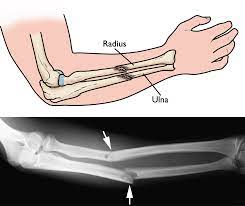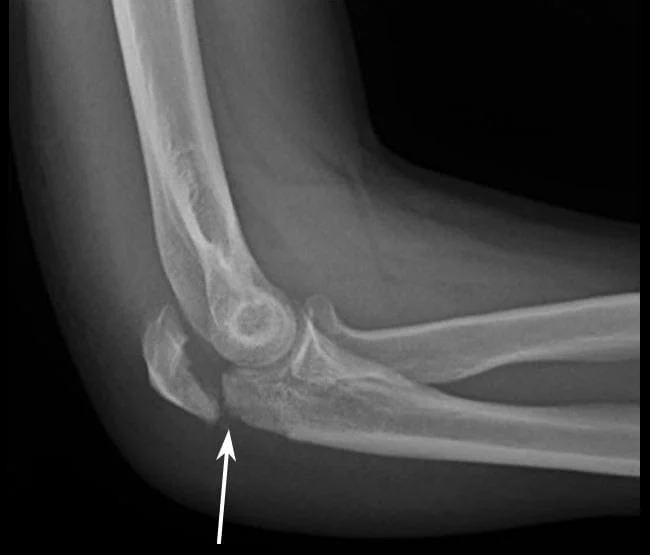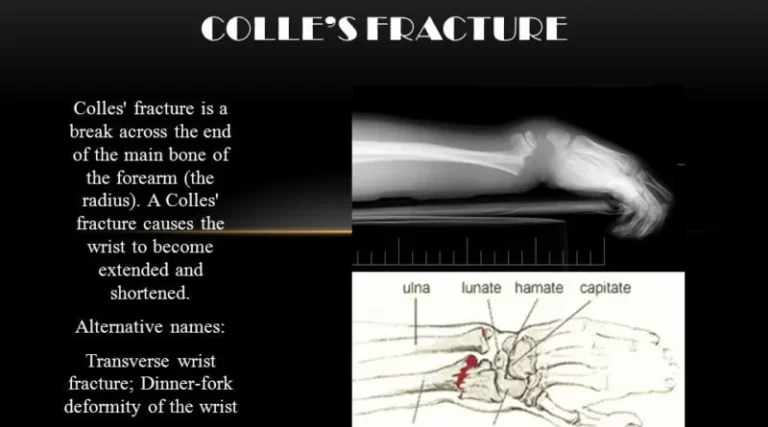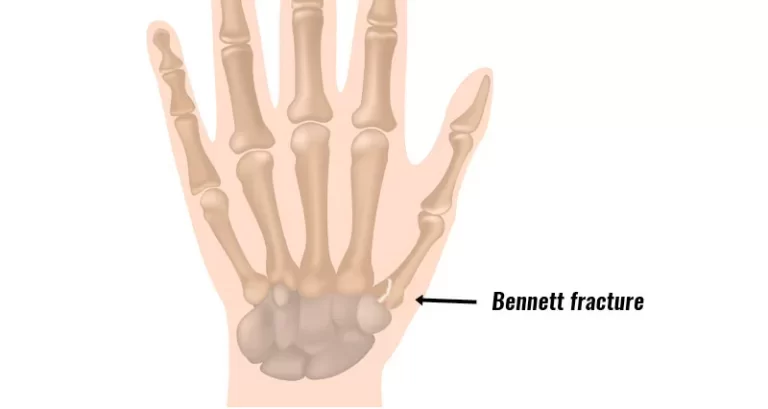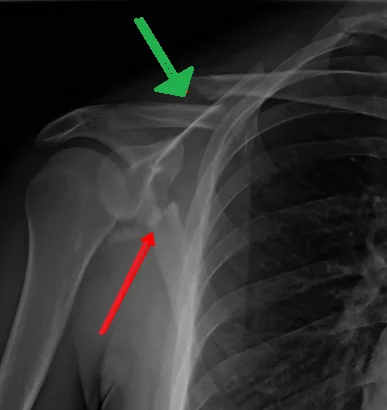Ulna Fracture
Table of Contents
What is an Ulna Fracture?
An ulna fracture is a crack in the ulna bone, one of the two bones present in the forearm. It is constantly linked with a fracture of the other forearm bone, the radius. Ulna fracture also called Monteggia Fracture (type of ulna fracture), is always connected to a fracture of the other forearm bone, which is the radius.
An ulna fracture can be broken as a single so-known as nightstick fracture, which can be pushed by the person being hit on the innards of the forearm constantly by a stick, notably when they are carrying their arm up to safeguard their head from damage. The ulna bone can also crack next to falling on the forearm or falling on an extended hand.
Ulna fractures are more familiar in both gender males and females prior to age 40 and females after age 60. Adolescents who are more active in impacted sports are at greater threat.
Cause of Ulna Fracture
An ulna fracture can be broken alone as in a so-known “nightstick fracture”, which can result from an individual being direct hit on the innards of the forearm constantly by a stick, notably when they are bearing their arm up to safeguard their head from damage. An ulna fracture can even result from H/O falling on the forearm or falling on an extended arm.
Other etiology of ulna fractures keep sporting trauma, road traffic accidents, drops from a height, and circumstances for example osteoporosis and potentially both primary and secondary cancer.
Risk factors
Specific medical conditions or physical exercises can increase the chance of an ulna fracture.
High impact sports
Any sport that affects physical contact or increases your chance of falling. for example, football, soccer, gymnastics, skiing, and skateboarding — also raise the chance of ulna fracture.
Bone abnormalities
The pathology that weakens bones, for example, osteoporosis and bone tumors, raises your chance of ulna fracture. This kind of fracture is called a pathological fracture.
Types of Ulna Fractures
Fractures of the ulna can happen at various stages of the bone: close the wrist, in the center, or around the elbow. The fracture may be limited to the ulna or attended by injury to the radius or the wrist or elbow joints.
Nightstick fracture is a fracture of the central part of the ulna without having other fractures.
Distal ulna fractures generally emerge along with distal radius fractures.
Hume fracture – a fracture of the olecranon linked with volar dislocation of the radial head.
Monteggia fracture – the Monteggia fracture is defined as a fracture of the proximal end of the ulna associated with the dislocation of the head of the radius.
Galeazzi fracture – not a fracture of the ulna but a displaced fracture of the radius attended by a dislocation of the ulna at the wrist, on the other hand, the radius and ulna come concurrently.
Complications of Ulna Fracture
The prognosis for most ulna fractures is very useful if treated earlier. But complications can contain:
Irregular growth
Due to a child’s arm bones still maturing, a fracture in the region where growth happens around each end of a long bone (growth plate) can interrupt that bone’s growth.
Osteoarthritis
Fractures that happen in a joint can result in arthritis there years later.
Stiffness.
The immobilization needed to recover a fracture so can sometimes cause a painfully restricted range of motion of the elbow or shoulder.
Bone infection.
If a portion of your ulna fracture comes out or is exposed to the environment through your skin, it can be exposed to germs that can result in infection. Immediate treatment of this kind of fracture is essential.
Nerve or blood vessel injury.
If the upper arm bone (humerus) fractures into two or more pieces, the irregular ends can pinch neighboring nerves and blood vessels. Required immediate medical attention if you notice abnormal feelings like numbness or poor blood circulation.
Compartment syndrome.
Extreme swelling can cut off the blood circulation to part of the area, resulting in pain and numbness. Generally occurring 24 to 48 hours afterward to the injury, compartment syndrome is a medical emergency that needs surgery.
Diagnosis
The diagnosis of an ulna fracture is made following examining the person’s history, which generally includes a H/O of forearm pain afterward injury and then analyzing the injured forearm observed by an x-ray of the relevant part.
Treatment of Ulna Fracture
If the fracture is non-displaced, stable, and not correlated with another fracture, it may have been treated with a cast for approximately five to six weeks. During the healing duration, recovery can be observed with X-rays. Weighty lifting must be avoided. After the cast has been withdrawn exercises are facilitated and complete strength is recovered over the period. Treatment may even be with splinting and earlier movement.
When there is a displaced fracture and also when the radioulnar joints are concerned an operation is frequently achieved, using either flexible rods or screws and plates in demand to decrease the fracture and immobilize the bone.
How to Prevention Ulna Fracture?
Although it’s impossible to avoid an accident, these details can show some protection against bone fractures.
Diet for bone strength.
Eat a healthy diet that contains calcium-rich foods, for example, milk, yogurt, cheese, and vitamin D, which support your body to absorb calcium. You can obtain vitamin D from fatty fish, for example, salmon; from fortified foods, for example, milk and orange juice; and from sun exposure.
Exercise for bone strength
Weight-bearing physical exertion and exercises that improve balance and posture can strengthen bones and decrease the chance of a fracture. More the fit and active your life is, the less likely you are to fall and break a bone.
Avoid falls
To avoid falling, wear sensible grip shoes. Take precautions that can cause you to trip, such as area rugs. Make sure your living environment is well-lit.
Use protective gear
Wear wrist guards for high-risk activities, for example, in-line skating, snowboarding, rugby, and football.
Avoid smoke
Smoking can reduce bone mass and raises your risk of a broken arm. It also interferes with the recovery of fractures.
FAQ
In several circumstances, the bone will recover on its own without constant pain or stiffness. Occasionally, over-the-counter medications, for instance, acetaminophen (Tylenol), can assist with pain management. Regardless, several individuals may require physical therapy to recover full function.
Fractures are categorized according to extra-articular or intra-articular (radiocarpal joint, distal radioulnar joint, or both) classifications. Type I: Intra-articular and undisplaced. Type II: Displaced involving the radio scaphoid joint. Type III: Displaced affecting the radio lunate joint.
This is known as an open fracture and demands quick medical attention due to the threat of infection. Due to the strong impact needed to break the radius or ulna in the center of the bone, it is more familiar for adults to break both bones during a forearm injury.
There are many possible complications caused by distal forearm fractures, comprising compartment syndrome, neurovascular injury, tendon rupture, arthritis, carpal tunnel syndrome, and malunion or nonunion.
One great choice: dark leafy greens for example bok choy, Chinese cabbage, kale, collard greens, and turnip greens. One cup of cooked turnip greens has about 200 milligrams of calcium (20 percent of your daily purpose). On top of that, dark greens also have vitamin K, which can decrease your threat of osteoporosis

